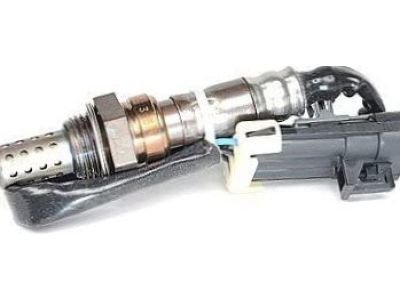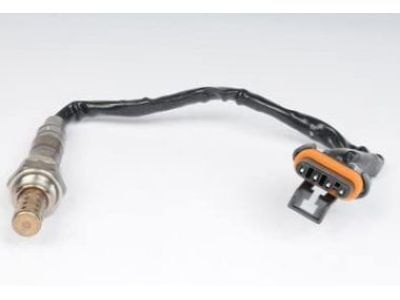My Garage
My Account
Cart
Genuine Chevrolet C1500 Oxygen Sensor
Oxygen O2 Sensor- Select Vehicle by Model
- Select Vehicle by VIN
Select Vehicle by Model
orChevrolet
C1500
Year
Select Vehicle by VIN
For the most accurate results, select vehicle by your VIN (Vehicle Identification Number).
6 Oxygen Sensors found
Chevrolet C1500 Sensor Asm,Heated Oxygen
Part Number: 19178938$59.35 MSRP: $123.24You Save: $63.89 (52%)Ships in 1-2 Business DaysChevrolet C1500 Sensor Asm,Heated Oxygen
Part Number: 19178934$69.10 MSRP: $143.50You Save: $74.40 (52%)Ships in 1-2 Business DaysChevrolet C1500 Sensor Asm,Heated Oxygen
Part Number: 19178918$78.14 MSRP: $140.16You Save: $62.02 (45%)Ships in 1-2 Business DaysChevrolet C1500 SENSOR ASM,HTD OXY<DO NOT USE, CONTACT TECH SPECIALIST
Part Number: 19355306$56.58 MSRP: $117.50You Save: $60.92 (52%)Ships in 1-2 Business DaysChevrolet C1500 Sensor Asm,Heated Oxygen
Part Number: 19178959$63.17 MSRP: $119.18You Save: $56.01 (47%)Ships in 1-2 Business Days
Chevrolet C1500 Oxygen Sensor
This, of course, refers to the Oxygen Sensor of Chevrolet C1500 vehicles that is responsible in gauging the quantity of Remaining Oxygen in the exhaust emissions of the engine in an effort to rectify the ratio of air and fuel introduced into the engines. This sensor produces a voltage that is proportional to the amount of oxygen in the exhaust so that the engine control computer of the vehicle has a closed loop to manage and maintain an efficient catalytic converter and low emission. The sensor commonly consisting of a zirconium dioxide sensing element with a platinum coating is heated to around 600degrees Fahrenheit to enable quicker operation. Newer model C1500 automobiles have at least two oxygen sensors, one upstream of the catalytic converter and the other downstream the converter; the upstream sensor reports primarily to the vehicle's engine control computer. Some of the newer vehicles may include oxygen sensors and air/fuel ratio sensors since the latter has broader air/fuel mixture measurement range than the former. Maintenance and monitoring of these oxygen sensors must be done at a regular basis as there will be a rise in emission and fuel consumption together with possible problems concerning the engine.
Each OEM Chevrolet C1500 Oxygen Sensor we offer is competitively priced and comes with the assurance of the manufacturer's warranty for the part. Furthermore, we guarantee the speedy delivery of your orders right to your doorstep. Our hassle-free return policy is also in place for your peace of mind.
Chevrolet C1500 Oxygen Sensor Parts Questions & Experts Answers
- Q: What is the role of an oxygen sensor in measuring exhaust gas on Chevrolet C1500?A: The oxygen sensor plays a vital role in measuring the remaining oxygen in the exhaust gas after combustion and subsequently generates a voltage output of between 0.1 volt (indicating high oxygen, lean mixture) and 0.9 volts (indicating low oxygen, rich mixture). In early models (1988-1995), a single wire oxygen sensor is positioned in the exhaust pipe just after the exhaust manifold. In later models (1996-2000), there are four oxygens sensors with two of them being pre-converter oxygen sensors located before the Catalytic Converter. To regulate fuel injector pulse width, the PCM continuously monitors voltage from the pre-converter oxygen sensor in order to keep an air/fuel ratio of 14.7:1 which optimizes emission and performance of an engine. The post converter oxygen sensor however does not influence air/fuel ratio control but rather, it is used to monitor catalytic converter efficiency as evidenced by slower fluctuating voltage signals indicating low levels of oxygen after catalysts. Below this, during warm-up, there is no use for the sensor's feedback as ECM/PCM operates in open-loop mode. Oxygen sensors require heating elements to achieve operating temperature quickly. Proper sensor operation depends on electrical connections, adequate air supply, proper temperature and unleaded fuel usage. Oxygen sensors issues can be detected by ECM/PCM by setting diagnostic trouble codes known as DTCs relating to its malfunctioning or failure which can be determined by observing its response to input signal changes etc . When disconnecting it for testing purposes, extreme care should be taken to avoid damaging it and also provide jumper wires/backprobing under which case should not produce diagnostic trouble codes that are normally expected if one wants to do testing without risking any damage on cars electric system although a diagnostic trouble code will still be triggered . With key on, voltmeter tests should indicate about 400-450 millivolts and for a warmed up engine, they should show voltage ranging from 100-900 millivolts for pre-converter sensors while post-converter sensors should show voltage within this range with no switching taking place. With the ignition on, in late models' oxygen sensor heater circuits it should be around 12 volts and heater resistance should be between 3.0 and 14.0 ohms. When replacing an oxygen sensor it must be done so that we do not damage pigtail and electrical connector, keep contaminants off of the sensor, avoid using cleaning solvents, and handle the sensor gently. Starting the engine briefly before replacement can ease removal. For secure removal of a post converter sensor, make sure that the vehicle is securely raised, disconnect the electrical connector if you are not quite sure how to use it yet, unscrew the sensor by employing your favorite tool for that purpose, apply anti-seize compound to its threads and then firmly fix it while reattaching its electrical connector after lowering down your vehicle.















